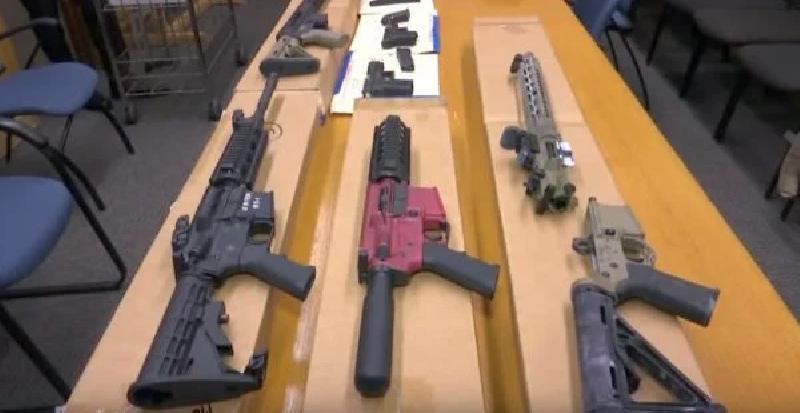The Bureau of Alcohol, Tobacco, Firearms, and Explosives (ATF) specified Tuesday that Gun Control Act (GCA) regulations cover types of incomplete pistol frames used in “ghost guns.”
The bureau argued in its open letter to federal firearms licensees that partially complete Polymer80, Lone Wolf, and similar striker-fired semi-automatic pistol frames “may readily be completed, assembled, restored, or otherwise converted” to a functional frame and thus fall under GCA jurisdiction based on the Justice Department’s (DOJ) “Frame or Receiver” rule. The rule, which became effective in August, says regulations for completed firearms also apply to gun parts kits that can be readily converted into them.
The Biden White House announced a DOJ rule to stop the spread of un-serialized, privately-made firearms, or “ghost guns,” in April 2021, calling them “the weapon of choice for many violent criminals.” The administration noted that law enforcement had been struggling to determine individual buyers of ghost guns found at crime scenes because the weapons were not marked with serial numbers.
“Today’s open letter is another important step in implementing the crucial public safety rule regarding privately made firearms or Ghost Guns,” ATF Director Steven Dettelbach said Tuesday. “Ghost Guns can kill like other firearms if they are in the wrong hands, so they are treated as firearms under the law. This means that they must have serial numbers so that law enforcement can trace if they are used in crimes like other guns, and also that those engaged in the business of selling them must be licensed dealers and run background checks.”
Defense Distributed Managing Director Cody Wilson told the Daily Caller News Foundation that the Polymer80 handgun kit had become very popular and the Biden administration wanted to stifle it, facing the challenge of “making it seem like they were addressing this ghost gun problem and hiding the dirty fact that most of the industry relies on unfinished receivers.”
“They redefined the definition of a firearm and they included most of the commercial polymer frames in that definition, but they gave themselves so much latitude that it’s indecipherable without asking the agency for a specific determination on any given product or any given kit,” Wilson stated. “They preserved most industrial unfinished receivers, especially those made out of metal, and they created a new classification for what they were trying to target, which was mostly frames of polymer for pistols.”
Defense Distributed has recently intervened in the Texas federal court case of VanDerStok v. Garland, challenging the “Frame or Receiver” rule. The company and the Second Amendment Foundation argue that the rule “illegally expands” the regulatory definition of a “firearm” “far beyond both its statutory and constitutional borders.”
Northern Texas U.S. District Court Judge Reed O’Connor preliminarily ruled in that case in September that the ATF likely usurped congressional authority, with Congress having defined a “firearm” as a finished frame or receiver.
“I think unless the Fifth Circuit does something crazy, the whole rule’s gonna be struck down because of this judge in this case, but in the meantime ATF’s showing its hand,” Wilson told the DCNF. “The entire time all it wanted to do was kill all components and kits which could be so-called ‘readily convertible,’ and they use that definition to apply to not just things that can be readily converted into firearms, but things that can be readily converted into frames and receivers of firearms. So, it’s just a whole lot of stuff that they wanted to cram into this definition of a firearm, and they’re gonna get away with it if not for Judge O’Connor here.”
An ATF Public Affairs representative told the DCNF the bureau does not comment on ongoing litigation.
via wnd

